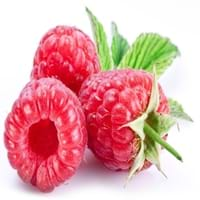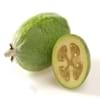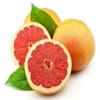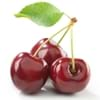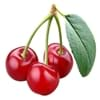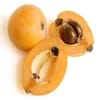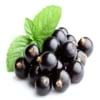फ़ेजोआ और रास्पबेरी
लाभ
स्वास्थ्य सुविधाएं
अवसादरोधी, कैंसर की रोकथाम, तंत्रिका तनाव कम कर देता है, अल्जाइमर रोग का उपचार, फेफड़ों की बीमारी का उपचार
कैंसर की रोकथाम, हार्ट को स्वस्थ्य रखता है, धब्बेदार अध: पतन रोकता, रक्त परिसंचरण समस्याओं को कम कर देता है
सामान्य लाभ
पाचन सहायता, वजन घटाने में मदद करता, रक्त परिसंचरण में सुधार, हड्डियों को मजबूत, आम सर्दी का उपचार
सूजन को काम करने के लिए, रक्त शर्करा के स्तर को नियंत्रित करता है, पाचन सहायता, आंख की देखभाल, वजन घटाने में मदद करता
त्वचा पे लाभ
रंग हल्का कर देता है, त्वचा पुनर्जीवन
बुढ़ापे मै लाभ, रंग हल्का कर देता है
बालों पे लाभ
स्वस्थ बालों को बढ़ावा देता है, बालों की सुरक्षा
मॉइस्चराइजर के रूप में उपयोग, बालों का बड़ना नियंत्रित करता है, चमकदार बाल
एलर्जी
एलर्जी के लक्षण
लागू नहीं
साँस लेने में कठिनाई, खुजली, हीव्स, खुजली, नाक बंद, बहती नाक, छींक आना, गीली आखें, घरघराहट
दुष्प्रभाव
एलर्जी की प्रतिक्रिया
एलर्जी की प्रतिक्रिया
उपयुक्त है
गर्भवती महिला
Yes
Yes
स्तनपान कराने वाली महिलाएं
Yes
Yes
खाने का अच्छा समय
दोपहर में एक नाश्ते के रूप में, रात में सोने से पहले और उपभोग ना करें, ताजा खाने के लिए, किसी भी अन्य खाद्य पदार्थों के साथ मिश्रण से बचने, भोजन के बाद ना खाए, सुबह के समय (दोपहर का भोजन करने से पहले)
नाश्ता (या खाली पेट) के रूप में लिए जाने के लिए उपयुक्त, दोपहर में एक नाश्ते के रूप में, भोजन के बाद ना खाए, सुबह के समय (दोपहर का भोजन करने से पहले)
पोषण
सेवन मात्रा
१०० ग्राम
१०० ग्राम
कार्बोहाइड्रेट
12.92 ग्राम
38
11.94 ग्राम
99+
रेशा
6.40 ग्राम
7
6.50 ग्राम
6
चीनी
8.20 ग्राम
33
4.42 ग्राम
99+
प्रोटीन
0.98 ग्राम
27
1.20 ग्राम
19
कार्बोहाइड्रेट मे अनुपात में प्रोटीन
0.05
22
0.10
15
विटामिन
विटामिन ए (रेट्नोल)
उपलब्ध नहीं है
2.00 माइक्रोग्राम
33
विटामिन बी 1 (थायमिन)
0.01 मिलीग्राम
99+
0.03 मिलीग्राम
30
विटामिन बी 2 (राइबोफ्लेविन)
0.02 मिलीग्राम
40
0.04 मिलीग्राम
24
विटामिन बी 3 (नियासिन)
0.30 मिलीग्राम
99+
0.60 मिलीग्राम
26
विटामिन बी 5 (पैंटोथैनिक एसिड)
0.23 मिलीग्राम
24
0.33 मिलीग्राम
11
विटामिन बी -6 (पाइरियोडॉक्सिन)
0.07 मिलीग्राम
25
0.06 मिलीग्राम
32
विटामिन B9 (फोलिक एसिड)
23.00 माइक्रोग्राम
11
21.00 माइक्रोग्राम
13
विटामिन सी (एस्कॉर्बिक एसिड)
32.90 मिलीग्राम
26
26.20 मिलीग्राम
35
विटामिन ई (टोकोफेरोल)
0.16 मिलीग्राम
32
0.87 मिलीग्राम
12
विटामिन (फ़्यल्लोचिनोने)
3.50 माइक्रोग्राम
19
7.80 माइक्रोग्राम
10
लाइकोपीन
5.00 माइक्रोग्राम
7
0.00 माइक्रोग्राम
9
ल्यूटिन और ज़ेआक्शंतहीं
27.00 माइक्रोग्राम
26
136.00 माइक्रोग्राम
7
चोलिने
उपलब्ध नहीं है
12.30 माइक्रोग्राम
3
वसा
0.60 ग्राम
14
0.65 ग्राम
12
खनिज पदार्थ
पोटैशियम
172.00 मिलीग्राम
99+
151.00 मिलीग्राम
99+
लोहा
0.14 मिलीग्राम
99+
0.69 मिलीग्राम
18
सोडियम
3.00 मिलीग्राम
17
1.00 मिलीग्राम
20
कैल्शियम
17.00 मिलीग्राम
24
25.00 मिलीग्राम
18
मैग्नीशियम
9.00 मिलीग्राम
26
22.00 मिलीग्राम
11
जस्ता
0.06 मिलीग्राम
27
0.42 मिलीग्राम
6
फास्फोरस
19.00 मिलीग्राम
26
29.00 मिलीग्राम
18
मैंगनीज
0.08 मिलीग्राम
34
0.67 मिलीग्राम
5
तांबा
0.04 मिलीग्राम
99+
0.09 मिलीग्राम
24
सेलेनियम
उपलब्ध नहीं है
0.20 माइक्रोग्राम
15
वसायुक्त अम्ल
ओमेगा -3s
58.00 मिलीग्राम
13
126.00 मिलीग्राम
5
ओमेगा 6s
214.00 मिलीग्राम
9
249.00 मिलीग्राम
7
स्टेरोल
पानी की मात्रा
83.28 ग्राम
99+
85.75 ग्राम
35
राख
0.38 ग्राम
34
0.46 ग्राम
29
कैलोरी
आहार की मात्रा
१०० ग्राम
१०० ग्राम
छिलका के साथ ताजा फल में कैलोरी
उपलब्ध नहीं है
53.00 किलो कैलोरी
21
छिलका के बिना ताजा फल में कैलोरी
55.00 किलो कैलोरी
12
उपलब्ध नहीं है
जमे हुए फार्म में कैलोरी
उपलब्ध नहीं है
52.00 किलो कैलोरी
13
सूखे रूप में कैलोरी
747.00 किलो कैलोरी
1
363.00 किलो कैलोरी
9
डिब्बाबंद रूप में कैलोरी
उपलब्ध नहीं है
91.00 किलो कैलोरी
8
खानो मैं कैलोरी
रस में कैलोरी
25.00 किलो कैलोरी
40
68.00 किलो कैलोरी
18
जाम में कैलोरी
220.00 किलो कैलोरी
24
150.00 किलो कैलोरी
33
पाई में कैलोरी
300.00 किलो कैलोरी
18
169.00 किलो कैलोरी
99+
विशेषताएँ
प्रकार
पेड़
बेरी
परिपक्व ऋतु
पतझड़, सर्दी
गर्मी
किस्मों
अनातॉकी, जेमिनाइ, कैटेरी, ककारीकी, पौनमु, यूनीक, अपोलो, दें'स चाय्स, काकापो, मॅमॉत, ओपल स्तर, ट्राइयुंफ और विकी तू
आमिटी, ऑगस्ट रेड, बाय्न, कंबी, केरोलाइन, कॉमेट, दीनकुम, डॉर्मन रेड, लॅतम, मीकेर, ब्लॅक हॉक, हयदा, लॉरन, मीकेर और लॅतम
बीजरहित वैराइटी
No
No
रंग
हरा
काली, बैंगनी, लाल, पीला
अंदर का रंग
सफेद
गुलाबी
आकार
अंडाकार
चोटीदार
बनावट
रसीला
रसीला
स्वाद
मीठा
मीठा
मूल देश
अर्जेंटीना, ब्राज़िल, परागुआ, उरुग्वे
यूरोप, उत्तरी एशिया
पर बढ़ता है
उपलब्ध नहीं है
पेड़
खेती
मिट्टी के प्रकार
मिट्टी दोमट, गंभीरता से दोमट, बलुआ
रेतीली दोमट
मृदा पीएच
6-6.5
5.8-6.5
वातावरण की परिस्थितियाँ
सर्दी, गरम
सर्दी
तथ्य
के बारे में तथ्य
- फेज़ोआ पेड़ सजावट के लिए उपयोग मे आते है।
- रसभरी (रास्पबेरी) के पौधे दो प्रकार के होते हैं।
- बाजार में आज इसका जैम एक लोकप्रिय उत्पाद के रूप में प्रयोग में लाया जा रहा है।
- इसकी २०० से ज्यादा प्रजातियां हैं।
मादक पेय पदार्थों में
वाइन
Yes
Yes
बीयर
Yes
Yes
स्पिरिट्स
Yes
Yes
कॉकटेल
Yes
Yes
उत्पादन
शीर्ष निर्माता
न्यूजीलैंड
रूस
दूसरे देश
ऑस्ट्रेलिया, आज़रबाइजान, भारत, जापान, संयुक्त राज्य अमेरिका
आज़रबाइजान, कनाडा, मेक्सिको, पोलैंड, सर्बिया, स्पेन, यूक्रेन, यूनाइटेड किंगडम, संयुक्त राज्य अमेरिका
शीर्ष आयातक
चीन
संयुक्त राज्य अमेरिका
शीर्ष निर्यातक
न्यूजीलैंड
पोलैंड
वैज्ञानिक नाम
वानस्पतिक नाम
एक सेल्लोवीणा
रुबूस इडाइअस
पर्याय
फेज़ोआ सेल्लोवियना या ओर्थोस्टेमोन सेल्लोवियानूस
उपलब्ध नहीं है
श्रेणीविभाजन
डोमेन
यूकेरिया
यूकेरिया
राज्य
प्लाटै
प्लाटै
सुबकिंगडॉम
त्रचेओबेइन्ता
त्रचेओबेइन्ता
विभाजन
माग्नोलियोफायत
माग्नोलियोफायत
क्लास
मग्नोलियोप्सिडा
मग्नोलियोप्सिडा
उपश्रेणी
रोसइदै
रोसइदै
ऑर्डर
म्य्र्तलेस
रोसलेस
फॅमिली
मैरटसऐ
रोसासए
जाति
अकका
रूबस
प्रजाति
ए सेल्लोवीणा
र. इडाइअस
जेनेरिक ग्रुप
मेंहदी
गुलाब का फूल

